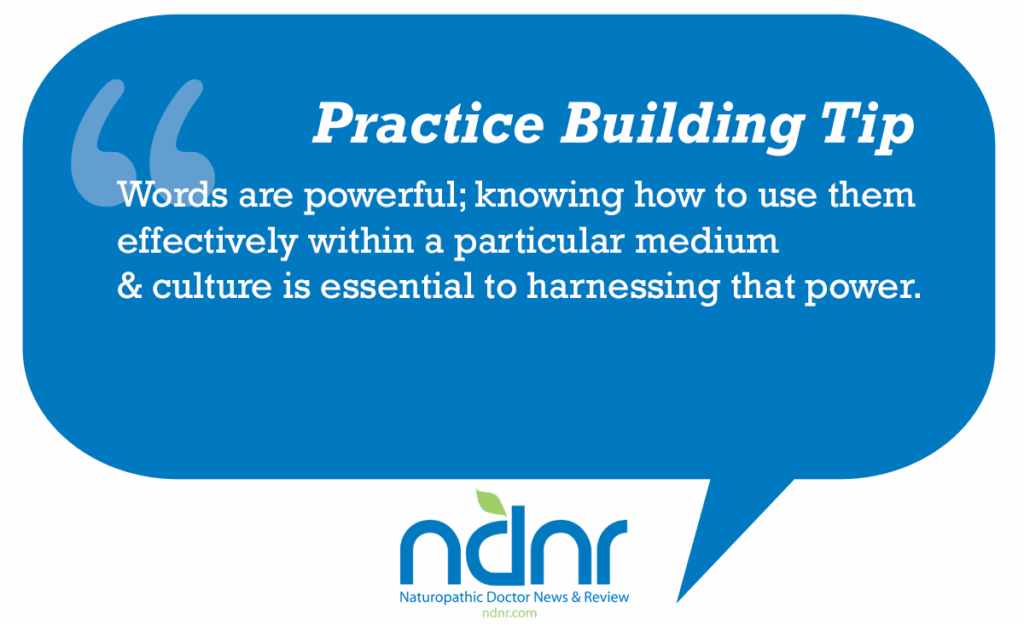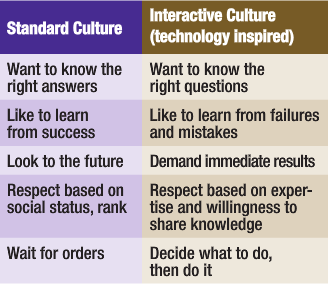Kate Williams, MA
Web sites are interactive points of contact between you and curious or interested visitors; they inform, educate, advertise, market, sell; they reflect you, your purpose and your way of practicing and doing business. Regardless of all the bells, whistles and visual play a web developer incorporates into your site’s design and navigation, well-positioned content is the most influential means of establishing a relationship with your visitors. Ironically, however, content is often an afterthought, or a spare attempt to report who you are, what you do and why visitors should contact you.
Words are powerful; knowing how to use them effectively within a particular medium and culture is essential to harnessing that power. While advertising and marketing is not within the scope of this article, when writing your content you must understand that people seek, interact and respond to information or advertising on the Internet much differently than they do to printed media.
The World Wide Web is interactive. In his book, Writing for the Web 3.0, Crawford Kilian distinguishes between online media and print, film, TV and radio mediums in terms of communication style. While the standard model of one-way communications says under its breath, “Do what I say?,” the online, or interactive culture says, “Is this what you want?”
Two-Way Conversation
Interactive media requires writing that initiates conversation or response rather than unopposed directives. Whatever you use your site for, good web writing needs to take advantage of the medium’s ability for two-way conversation. If you don’t know how to initiate that conversation, you will be passed by with a split second click of a mouse.
While Kilian acknowledges the importance of presenting content in terms of your reader rather than simply what you have to offer them (standard model), Mark Silver, international business coach and master Sufi teacher, takes this marketing strategy and adds heart and genuine regard for site visitors. He proposes formulating your content as a “customer-focused story,” the goal being to provide content that supports a visitor to discern whether they can trust that you understand them and can help them get what they need.
Online Writing Tips
Silver goes into great depth on how to create a Web site in his book, Heart-Centered Websites; however, there are a few relevant writing style tips he suggests for turning a prospecting client into someone who enters a conversation with you. Any web writer or marketer will emphasize the importance of writing in the second person – refer to the reader as “you.” With that as a writing style foundation, four basic steps for compassionately connecting with your visitor follow:
- Open with an empathetic headline and/or paragraph. With your attention on the client, ask yourself what they need, and why they are seeking out your service.
- Offer reassurance that there is a way to solve their problem. They or their situation can get better.
- Let them know how you can help them.
- Offer them a way to learn more – direct them to a contact or sign-up page if you offer a newsletter, for example.
While successfully engaging your visitors through conversational, inviting language and style, there are also practical formatting issues to keep in mind. Because reading on a computer monitor is slower and causes more eyestrain then hardcopy reading, web site visitors tend to be more impatient. They look for immediate engagement, and they want to quickly find the information they seek. There are several ways to address this when writing your content:
- Short paragraphs: Keep them to no more than 100 words, often less, in chunks of information that can stand alone.
- Descriptive subheadings: These increase ease of reading, further allowing visitors to decide if they need to read the associated paragraph.
- Bold headings and important words or phrases: Bolding significant headings and words further supports scanning and quick comprehension of your site’s major messages or points. Italicizing sparingly can also help focus attention.
- Use .pdf files for lengthy, detailed information: Create links for visitors who want to read or print and read articles or other types of information you offer.
 Clearly, there are many aspects involved in effective web writing, including search engine optimization (SEO), a complicated Web marketing strategy. While this article only skims the surface, the above guidelines will improve your Web content exponentially. If you want your Web site to be read and generative, effective content is critical. If you do not have the time or motivation to learn how to do it well, it may be worth finding someone who can turn your ideas into productive Web words.
Clearly, there are many aspects involved in effective web writing, including search engine optimization (SEO), a complicated Web marketing strategy. While this article only skims the surface, the above guidelines will improve your Web content exponentially. If you want your Web site to be read and generative, effective content is critical. If you do not have the time or motivation to learn how to do it well, it may be worth finding someone who can turn your ideas into productive Web words.
Kate Williams, MA at WordTurners, offers writing, editing and coaching services for natural healthcare providers, small businesses, non-profits and fellow writers. She has been writing and involved in the naturopathic community for more than 20 years. She lives and works in Portland, Ore.





